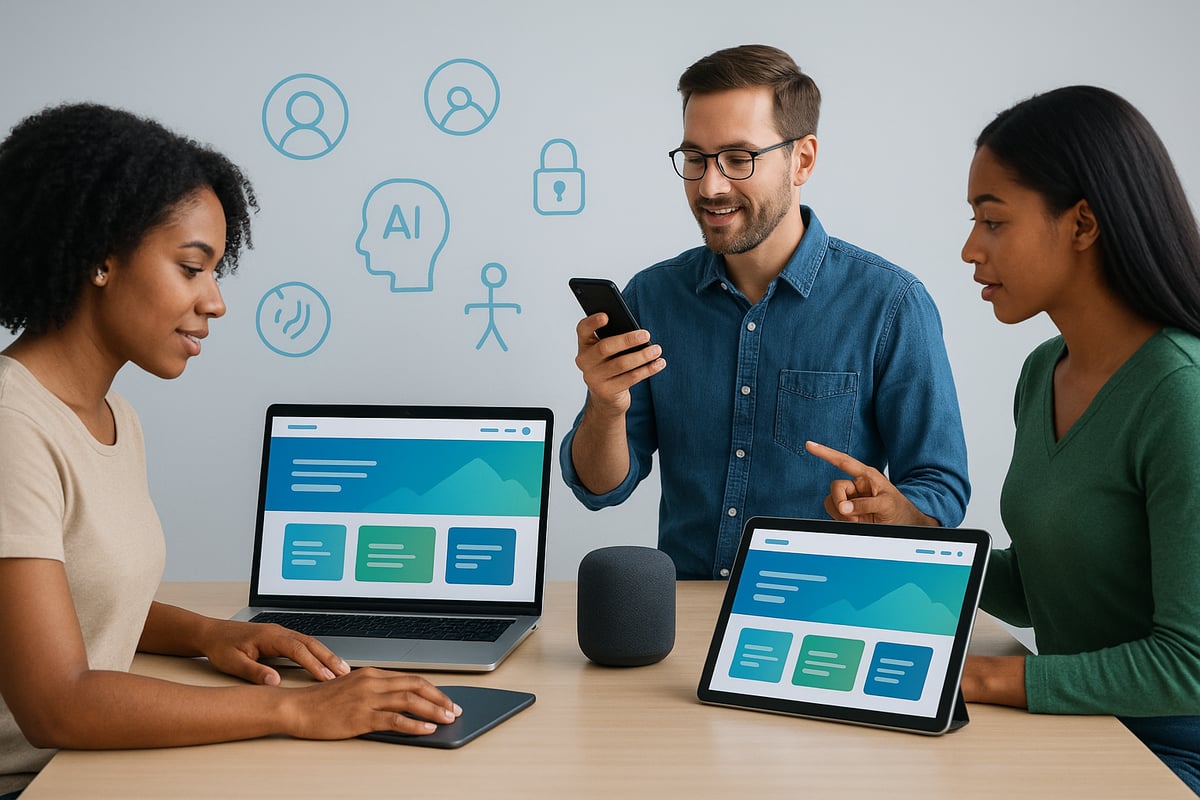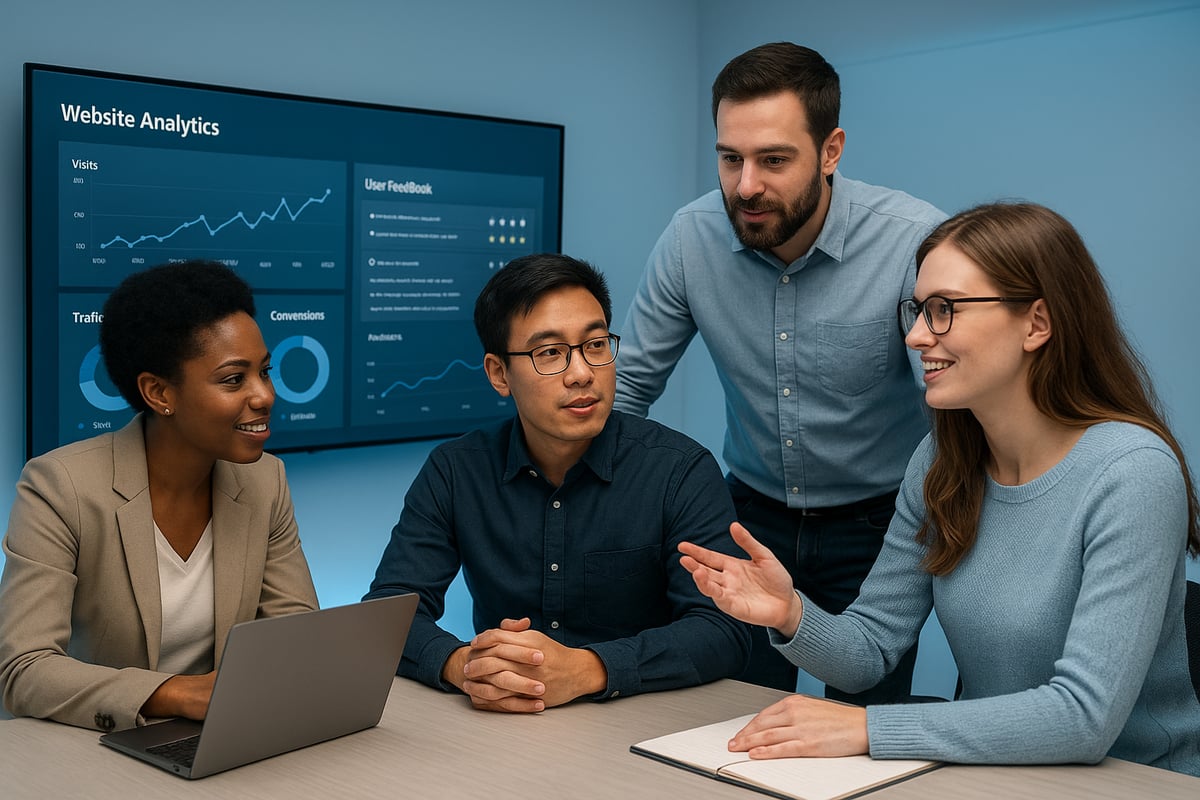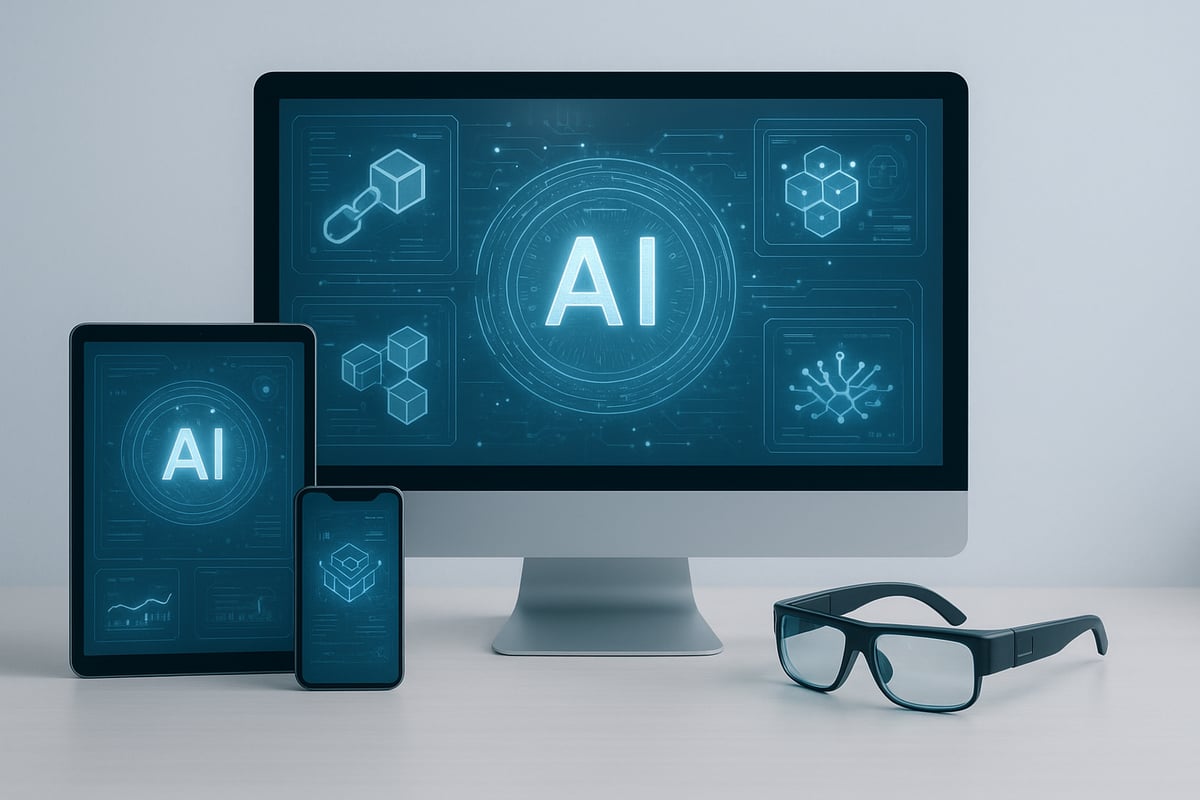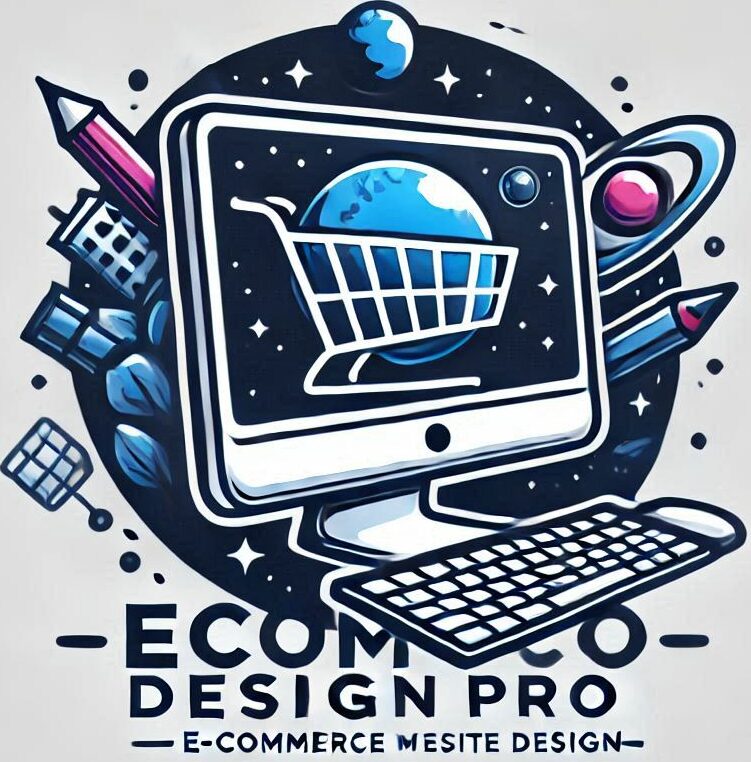
Digital expectations are evolving at lightning speed, making the best website user experience a non-negotiable for businesses in 2025. As competition intensifies and users demand more, mastering UX can be the key to unlocking growth, satisfaction, and loyalty.
This post unveils 7 innovative strategies that will shape the best website user experience in the year ahead. Ready to discover actionable insights that will transform your website and set your brand apart? Dive in to learn how you can create a future-proof digital experience.
The Evolution of Website User Experience: 2020-2025
The landscape of the best website user experience has transformed rapidly from 2020 to 2025. Businesses and designers have responded to fast-changing digital expectations by rethinking how users interact with websites. This shift has influenced not just aesthetics, but the fundamental ways users engage online.

Key UX Shifts and Trends
From 2020 to 2025, the best website user experience has been shaped by several major trends. Personalization powered by AI now tailors content in real time. Accessibility is prioritized, making sites usable for everyone. Mobile-first and voice-controlled interfaces have become the standard, reflecting how users access information.
Speed and seamless navigation are now non-negotiable, as users expect instant results. Privacy and transparency are essential, with users demanding to know how their data is used. Inclusive and sustainable design has gained momentum. A clear example is the move from static to dynamic, AI-driven homepages, which adapt to each visitor.
Why UX is the Cornerstone of Digital Success
The best website user experience directly impacts business outcomes. A well-designed UX increases conversion rates, boosts customer retention, and enhances lifetime value. It also shapes brand reputation and fuels positive word-of-mouth in crowded digital markets.
Industry leaders like Amazon constantly refine their UX to stay ahead. According to recent data, 88% of online consumers are less likely to return after a bad experience. For organizations seeking to elevate their strategy, Mastering User Experience Design offers actionable insights and proven methods to achieve measurable improvement.
Anticipating User Needs in 2025
Looking ahead, the best website user experience will rely on predicting and adapting to user needs in real time. AI-powered predictive design lets interfaces adjust instantly based on behavior. Consistency across devices—phones, tablets, desktops, and even wearables—ensures users feel at home anywhere.
Netflix’s evolution of its recommendation engine is a prime example of anticipating what users want before they even ask. Users now expect frictionless, intuitive experiences, with “invisible” UX that simply works without drawing attention to itself.
Challenges and Opportunities Ahead
Designers face the challenge of balancing innovation with usability as they strive for the best website user experience. Integrating new technologies like AR and VR must be done thoughtfully, so users are not overwhelmed. Ensuring accessibility remains a priority, even as rapid change accelerates.
The complexity of adding immersive features creates hurdles, but also unique opportunities. Brands that embrace change and adapt early are positioned to lead their industries, setting new benchmarks for digital excellence.
7 Strategies for the Best Website User Experience in 2025
Delivering the best website user experience in 2025 requires a blend of innovation, empathy, and technical excellence. As digital landscapes become more competitive, these seven strategies will define the leaders in website UX. Let’s explore each approach and how it shapes the future of user-centric design.

1. Hyper-Personalization Through AI and Machine Learning
Hyper-personalization is revolutionizing the best website user experience by leveraging AI and machine learning to adapt in real time. In 2025, websites will use advanced algorithms to analyze visitor data instantly, tailoring content, product recommendations, and navigation pathways.
Imagine landing on an e-commerce homepage that reorganizes itself based on your browsing history, location, and even time of day. This dynamic approach ensures the best website user experience for every visitor. Adaptive interfaces will adjust layouts, highlight relevant features, and suggest content that aligns with individual interests.
The AI-Powered Personalization in E-Commerce approach offers a clear example of how brands use data to enhance the best website user experience. By integrating real-time analytics, businesses can automatically adjust promotions, streamline checkouts, and even predict what customers might want next.
However, privacy remains a core concern. Ethical data usage, transparent consent forms, and strong security protocols are essential for maintaining trust. Tools like TensorFlow, IBM Watson, and Adobe Sensei enable developers to build AI-driven personalization without compromising ethics.
The impact is remarkable: 80% of users say they are more likely to purchase from brands that offer a personalized experience. For companies aiming for the best website user experience, hyper-personalization is no longer optional but a competitive necessity.
2. Seamless Mobile-First and Multi-Device Experiences
With over 60% of web traffic coming from mobile devices, prioritizing mobile-first design is vital for the best website user experience. In 2025, users expect flawless transitions between smartphones, tablets, desktops, and even wearables.
A seamless experience means content and features are consistent and optimized regardless of device. Responsive design ensures layouts flex to fit any screen, while adaptive design can serve entirely different interfaces based on device capabilities. Progressive Web Apps (PWAs) deliver app-like performance within a browser, blending speed and offline access.
Consider Starbucks’ mobile ordering system. Users can start an order on their phone, continue on a tablet, and complete payment at the counter, all without friction. This continuity is a hallmark of the best website user experience today and in the future.
Touch, gesture, and voice navigation are becoming standard. Reducing mobile checkout friction, such as auto-filling forms and supporting digital wallets, removes barriers to conversion. The best website user experience is about meeting users wherever they are, on whatever device they choose.
3. Advanced Accessibility and Inclusive Design
Accessibility is foundational to the best website user experience. In 2025, meeting and exceeding WCAG 2.2/3.0 standards is expected, not optional. Websites must cater to neurodiverse users and those with a wide range of physical abilities.
Inclusive design involves integrating voice navigation, screen readers, and keyboard-only controls. Apple’s VoiceOver and switch control features set benchmarks for accessible UX. Choosing the right color palettes, font sizes, and contrast ratios ensures readability for everyone.
The business case is clear. One in four adults lives with a disability, meaning accessible sites reach broader audiences and improve SEO. Testing with real users from diverse backgrounds reveals barriers developers might miss, refining the best website user experience even further.
Accessible websites not only expand reach but also demonstrate a brand’s commitment to equity. By incorporating advanced accessibility features, companies secure loyalty and trust, essential elements of the best website user experience.
4. Ultra-Fast Load Times and Performance Optimization
Speed is a non-negotiable factor in the best website user experience. Users expect sites to load instantly, and even a one-second delay can increase bounce rates and reduce conversions. In 2025, Core Web Vitals like Largest Contentful Paint (LCP), First Input Delay (FID), and Cumulative Layout Shift (CLS) set the benchmarks for high performance.
Websites optimize images using next-gen formats and lazy loading, ensuring media-rich pages do not slow down performance. Google’s focus on web performance in search rankings underscores the importance of speed for the best website user experience.
Content Delivery Networks (CDNs) and edge computing distribute content closer to users, reducing latency worldwide. Eliminating render-blocking resources and minimizing code further boost efficiency.
Continuous monitoring and performance testing are critical. According to industry data, 53% of users abandon sites that take more than three seconds to load. Fast, responsive websites retain users and drive conversions, making speed a pillar of the best website user experience.
5. Immersive and Interactive Micro-Experiences
Micro-interactions and immersive design elements transform the best website user experience from ordinary to extraordinary. Subtle animations, hover effects, and transitions provide immediate feedback, making sites feel alive and responsive.
Interactive storytelling and gamification, as seen in Duolingo’s reward system and progress tracking, keep users engaged and motivated. AR and VR bring products to life, allowing users to visualize items in their own space before purchasing.
Tools like Figma and Adobe XD enable designers to prototype and test interactive experiences rapidly. The best website user experience uses these elements to enhance, not distract, from the primary user journey.
Data shows that interactive content can double conversion rates. By integrating micro-experiences thoughtfully, brands create memorable interactions that drive loyalty and increase the effectiveness of the best website user experience.
6. Privacy-First UX and Transparent Data Practices
Trust is at the heart of the best website user experience. In 2025, users demand clear communication about how their data is used. Privacy-first design means interfaces must explain data collection, usage, and consent in understandable terms.
Transparent privacy policies and cookie management tools build confidence. Integrating privacy controls into account settings empowers users to manage their data directly. GDPR-compliant opt-in forms and dashboards are now standard for the best website user experience.
The balance between personalization and privacy is delicate. Brands must use data responsibly while giving users control. Privacy auditing tools help ensure compliance and reduce legal risks.
Statistics show 79% of consumers are concerned about company data practices. Addressing these concerns head-on strengthens brand loyalty and is central to the best website user experience.
7. Sustainable and Ethical Web Design
Sustainability is becoming a defining factor for the best website user experience. Minimizing environmental impact through green hosting, efficient code, and eco-friendly design choices is now expected.
Features like dark mode and optimized images reduce energy consumption. Brands like Ecosia lead by example, offering carbon-neutral search experiences. Ethical design avoids manipulative “dark patterns” and promotes digital well-being by reducing cognitive overload.
Gen Z and socially conscious consumers prefer brands that align with their values. Measuring and reporting digital sustainability efforts shows accountability and commitment to a better future. Data reveals that 73% of Gen Z favor brands with strong ethical stances, making sustainability essential for the best website user experience.
Measuring and Optimizing UX Success in 2025
Optimizing for the best website user experience is not a one-time task, but an ongoing commitment. As digital landscapes evolve, so do the expectations and behaviors of users. Measuring, analyzing, and refining user experience strategies is vital for staying competitive and delivering lasting value.

Key Metrics and Analytics Tools
To achieve the best website user experience, businesses must monitor a comprehensive set of UX metrics. Essential indicators include Net Promoter Score (NPS), Customer Satisfaction (CSAT), task success rate, and time on task. These metrics provide a foundation for understanding user sentiment and efficiency.
Advanced analytics, such as heatmaps, session recordings, and AI-driven insights, reveal how visitors interact with your site. For example, Google Analytics 4 allows teams to track engagement metrics and set clear performance benchmarks for 2025.
Speed is a critical factor, so leveraging resources like Improve E-Commerce Site Loading Speed helps teams address performance issues that directly impact user satisfaction.
By combining qualitative and quantitative data, organizations can identify strengths and areas for improvement in their best website user experience.
User Testing and Continuous Improvement
Continuous testing is the backbone of the best website user experience. Regular usability tests with real users uncover pain points and validate design decisions. A/B and multivariate testing empower teams to compare variations and measure the impact of changes on user behavior.
Rapid prototyping and iterative design cycles enable swift adaptation to feedback and evolving needs. Amazon’s culture of constant experimentation is a leading example, showing that even small tweaks can yield significant improvements.
Embedding a mindset of ongoing refinement ensures your best website user experience remains relevant and effective as user expectations change.
Integrating User Feedback Loops
Direct feedback is essential for shaping the best website user experience. Collect data through on-site surveys, chatbots, and feedback prompts to capture user sentiment in real time. Social listening tools allow brands to monitor conversations and spot emerging trends.
Prioritizing and acting on user suggestions builds trust and loyalty. For instance, Slack’s in-app feedback mechanism helps the company rapidly address concerns and deliver meaningful updates.
By closing the loop and showing users their voices matter, brands can continuously evolve the best website user experience to exceed expectations.
Building a UX-First Culture
Establishing a UX-first culture is the foundation for delivering the best website user experience. This requires training cross-functional teams in user-centric principles and empowering them to make informed decisions.
Leadership must champion UX by embedding it in company values and key performance indicators (KPIs). Airbnb’s design thinking approach illustrates how a strong culture fuels innovation and consistency.
When everyone in the organization prioritizes the best website user experience, it becomes a natural part of daily operations, driving long-term growth and customer satisfaction.
Future-Proofing Your Website: Trends to Watch Beyond 2025
The digital landscape is evolving at an unprecedented pace. To ensure your site delivers the best website user experience well into the future, it is vital to keep an eye on the trends shaping tomorrow’s web. Here is what to expect beyond 2025.

AI-Driven Conversational Interfaces and Voice Search
Conversational AI is redefining how users interact with websites. Chatbots, virtual assistants, and voice search are becoming integral to the best website user experience. In the coming years, expect seamless, natural language communication across platforms.
- Voice search will drive content optimization for spoken queries.
- Chatbots will handle more complex support and sales tasks.
- “No interface” experiences will emerge, blending voice and text.
These innovations create faster, more intuitive journeys. Businesses that embrace conversational UX will set new standards for accessibility and convenience.
Web3, Decentralization, and User Empowerment
Web3 technologies are placing control back into users’ hands. Blockchain enables digital identity, secure transactions, and user-owned data, all crucial for the best website user experience.
- Decentralized apps (dApps) let users manage their own information.
- Privacy and transparency become default expectations.
- Token economies and smart contracts open new engagement models.
For brands, adapting to Web3 means fostering trust and loyalty. As decentralized systems mature, expect a shift in how websites manage data security and user empowerment.
Cross-Reality Experiences: AR, VR, and Mixed Reality
Immersive technologies are unlocking new frontiers for the best website user experience. Augmented reality, virtual reality, and mixed reality create engaging, interactive environments for shopping, learning, and more.
- AR lets users visualize products in real spaces.
- VR provides virtual tours, training, or events.
- Mixed reality offers seamless transitions between digital and physical worlds.
For a detailed look at how these technologies are shaping web design, see Immersive Experiences with AR and VR. As these experiences become mainstream, they will set new benchmarks for user engagement and satisfaction.
The Rise of Ethical and Responsible AI in UX
AI will continue to power the best website user experience, but ethics must guide its use. Ensuring fairness, transparency, and accountability in AI-driven interfaces is paramount.
- Brands must avoid bias and respect user autonomy.
- Transparent algorithms and clear consent are essential.
- Regulatory compliance and user trust go hand in hand.
For more on this topic, explore AI-Enhanced Web Experiences. Proactive brands will lead by building responsible, human-centered AI systems that adapt as regulations and user expectations evolve.



